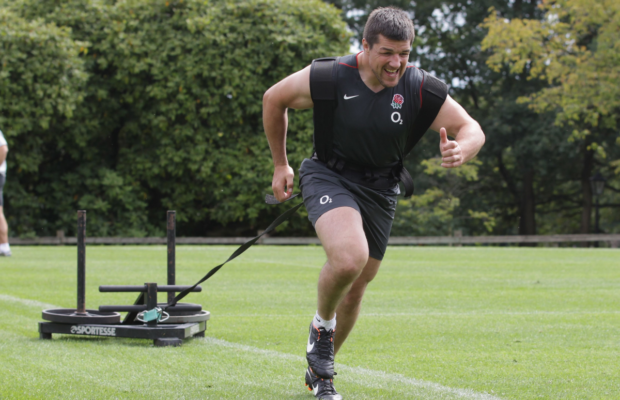Resisted Sprints: Use the right weight to get faster

Resisted sprint training—using a sled, parachute, bands or a belt—can be an excellent training method to increase speed in your athletes.
The benefits of resisted sprints include recruitment of more muscle fibers, increased load in hip extensor muscles and increased neural activation. But beware. Too much resistance can slow things down.
Too much load/resistance can alter biomechanics and kinematics. In a study of football players, for example, a load greater than 32 percent of body weight resulted in lower running velocity by almost 23 percent, a decrease in stride length by 24 percent, an increase in trunk lean by 15 percent, and an increase in ground contact time by almost 20 percent. Athletes were spending more time on the ground, reducing their stride lengths, and they were unable to extend their hips. None of those things are desirable when you want to sprint fast.
You may not be training the right motor control. There are essentially two motor control programs, one for walking and one for running. I know of a training facility that excessively used heavy sled loads and had the athletes drag or walk it. They could not even run, let alone sprint, because the load was so great. This is not applicable and it confuses the brain. Walking with a sled or slowly jogging trains the inappropriate neural pathway. If you want your athletes to sprint fast, you need to train them fast. Simple. Leave the heavy loads for the strongman competitors.
How much load is appropriate for resisted sprints?
Factors to consider include the sport, training status (i.e., an athlete with a higher Squat and Deadlift max can typically use more resistance than one who is new to strength training), goals and fatigue level, to name just a few.
Starting Points
- Use enough load to induce a training stimulus but not so high that it changes your sprint technique. If it feels like there is no difference between a regular sprint and a resisted sprint, there is probably little or no difference.
- Resistance should not slow you down by more than 10 percent. Any more will alter your run mechanics and potentially create bad habits. For example, you could do a timed 20 yards, then do 20 yards of resisted sprint training. Was it slower than 10 percent? Reduce the load.
When I coach, I often simply watch technique, especially in a team situation. Does the athlete’s sprint form alter? If so, the load is too heavy. If not, and it is tough—perfect.
RELATED: Increase Speed With 3 Resisted Sprint Drills
References
- Alcarez, P. E., Palao, J. M., Elvira, J. L. L., & Linthorne, N. P. (2008). “Effects of three types of resisted sprint training devices on the kinematics on sprinting at maximum velocity.” Journal of Strength and Conditioning Research, 22(3), 890-897.
- Alcarez, P. E., Palao, J. M. & Elvira, J. L. L. (2007). “Determining the optimal load for resisted sprint training with sled towing. A pilot study.” XXV ISBS Symposium. Ouro Preto – Brazil, 505-508.
- Cissik, J. M. (2005). “Means and method of speed training: Part II.” National Strength and Conditioning Journal, 27(1), 18-25.
- Magill, R. A. (2011). Motor Learning and Control: Concepts and Applications (9th ed.). New York: McGraw-Hill.
Article reprinted by permission of the author, Tammy Kovaluk